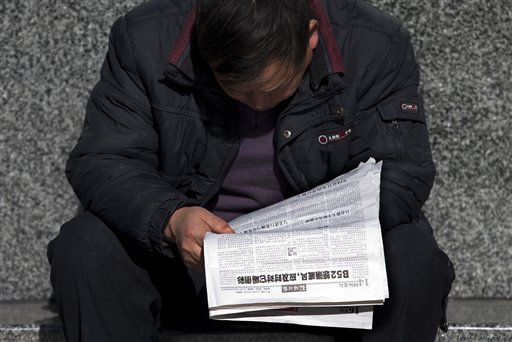(AP) China sends fighters to ID flights by US and Japan
By IAN MADER
Associated Press
BEIJING
China said it launched two fighter planes Friday to investigate flights by a dozen U.S. and Japanese reconnaissance and military planes in its new maritime air defense zone over the East China Sea.
It was the first time since proclaiming the zone on Nov. 23 that China said it sent planes there on the same day as foreign military flights, although it said it merely identified the foreign planes and took no further action.
China announced last week that all aircraft entering the zone _ a maritime area between China, Taiwan, South Korea and Japan _ must notify Chinese authorities beforehand and that it would take unspecified defensive measures against those that don’t comply. Neighboring countries and the U.S. have said they will not honor the new zone _ believed aimed at claiming disputed territory _ and have said it unnecessarily raises tensions.
The Ministry of Defense said the Chinese fighter jets identified and monitored the two U.S. reconnaissance aircraft and a mix of 10 Japanese early warning, reconnaissance and fighter planes during their flights through the zone early Friday.
In Washington, a Pentagon spokesman, Army Col. Steve Warren, said when asked about China’s statement, “The U.S. will continue to partner with our allies and will operate in the area as normal.”
Japanese officials declined to confirm details of any flights, but said routine missions in the area were continuing.
The United States and other countries have warned that the new zone could boost chances for miscalculations, accidents and conflicts, though analysts believe Beijing’s move is not intended to spark any aerial confrontations but rather is a long-term strategy to solidify claims to disputed territory by simply marking the area as its own.
June Teufel Dreyer, who specializes in security issues at the University of Miami, said the Chinese government _ while backing down from strictly enforcing the zone to keep a lid on tensions _ is walking a delicate line because it is faced with strong public opinion from nationalists at home. Sending up the fighter planes Friday was aimed at the domestic audience, and China is likely to send planes regularly when foreign aircraft enter the zone without notifying Chinese authorities, she said.
The zone is seen primarily as China’s latest bid to bolster its claim over a string of uninhabited Japanese-controlled islands in the East China Sea known as Senkaku in Japan and Diaoyu in China. Beijing has been ratcheting up its sovereignty claims since Tokyo’s nationalization of the islands last year. However, there are questions whether China has the technical ability to fully enforce the zone due to a shortage of early warning radar aircraft and in-flight refueling capability.
The United States, Japan and South Korea all have said they sent military flights into the zone over the past week, and Japanese commercial flights have continued unhindered _ although China has said its zone is not intended to have any effect on commercial flights not heading to China.
Dreyer said the U.S. and Japan have kept sending planes into the zone to make good on the message that they are ignoring it. “They have to do it more than once to show they are serious,” she said.
Dreyer said the Chinese government may have miscalculated the strength of the international response to the establishment of the zone, but that China will hold its line in the long run.
___
Associated Press writers Didi Tang in Beijing, Mari Yamaguchi in Tokyo, and Robert Burns in Washington, D.C., contributed to this report.
China Sends Fighters to ID Flights by US, Japan

COMMENTS
Please let us know if you're having issues with commenting.